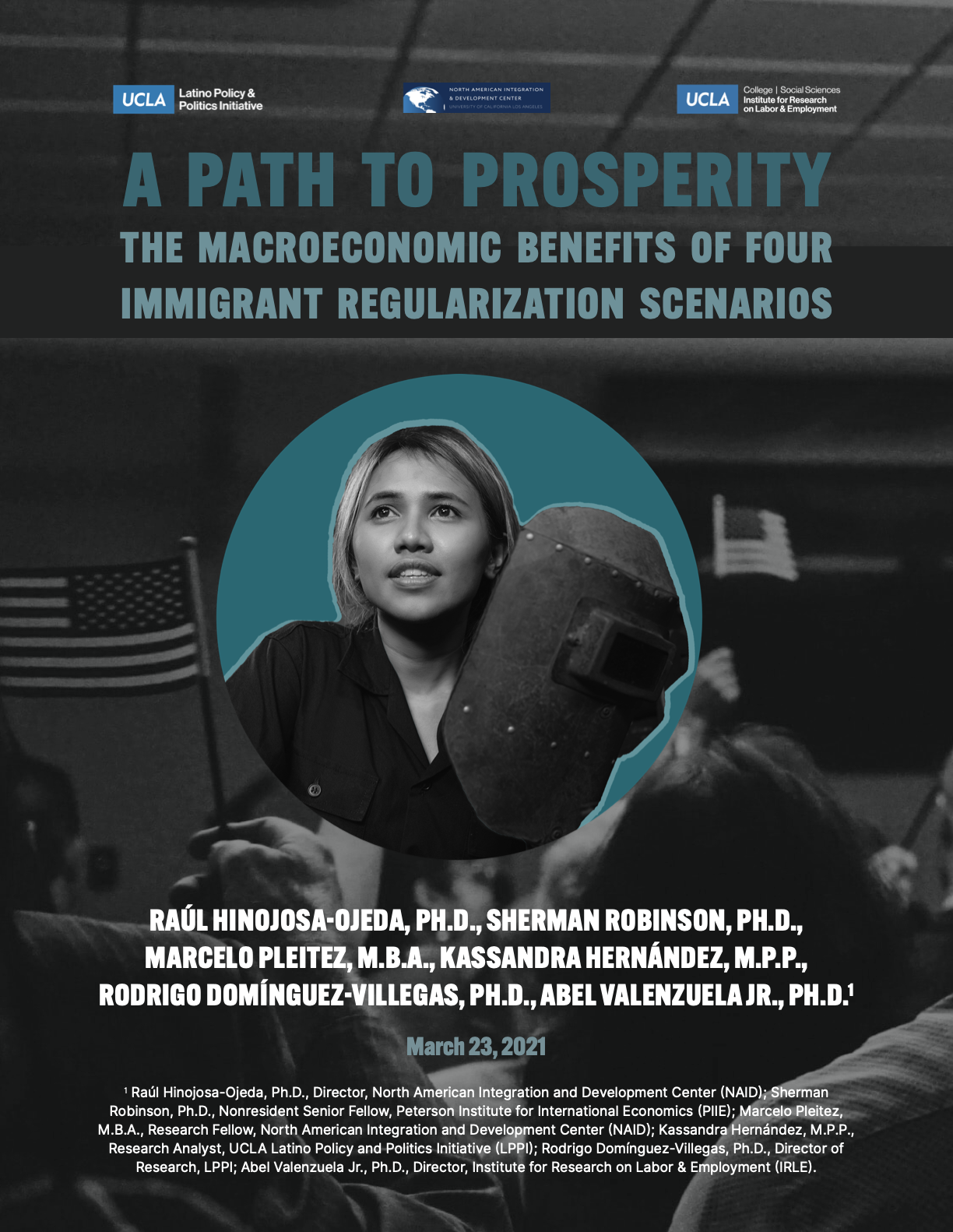A Path to Prosperity: The Macroeconomic Benefits of Four Immigrant Regularization Scenarios
Raúl Hinojosa-Ojeda, Sherman Robinson, Ph.D., Marcelo Pleitez, Kassandra Hernández, Rodrigo Domínguez-Villegas, Abel Valenzuela Jr.
March 23, 2021
Civil Rights, Labor Law, The Future of Work, Working Class History, BriefSummary
President Joe Biden’s pledge to achieve a path to citizenship for the roughly 11 million unauthorized immigrants in the United States has revived a long-lasting debate about who should be granted a pathway to citizenship. Those who argue against immigrant regularization tend to dominate the discussion using unproven claims about the potential incentives for others to arrive without documentation — often overlooking the economic benefits of regularizing unauthorized immigrants. Providing legal status, and ultimately citizenship, to these immigrants is good for economic growth, tax collection, and job creation.
To provide empirical evidence that can inform the debate, this report provides estimates of the economic impacts of granting citizenship to different groups, assuming different pathways specified in stand-alone legislation currently being discussed in Congress. We estimate the economic impacts of regularization and citizenship under four possible scenarios currently being discussed in the House and Senate: (1) regularizing all unauthorized workers, (2) regularizing only unauthorized essential workers, (3) regularizing only unauthorized workers with Deferred Action for Childhood Arrivals (DACA), and (4) regularizing workers with Temporary Protected Status (TPS).


